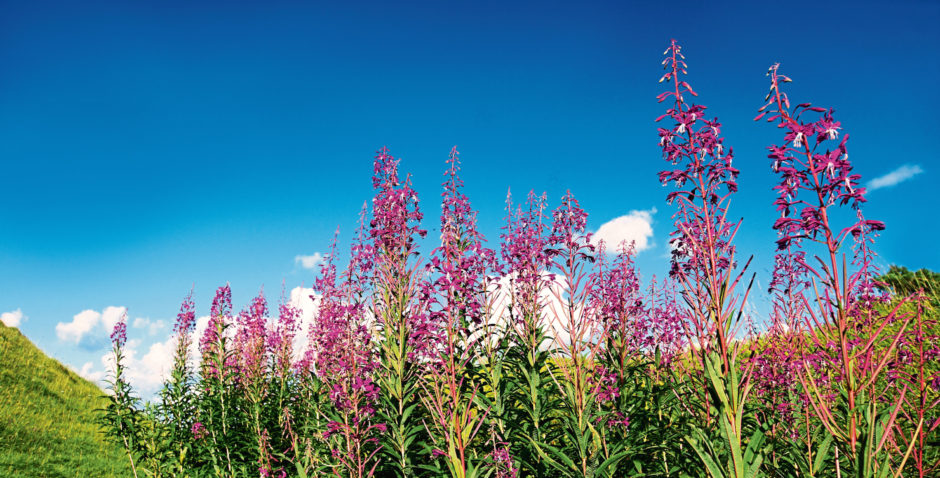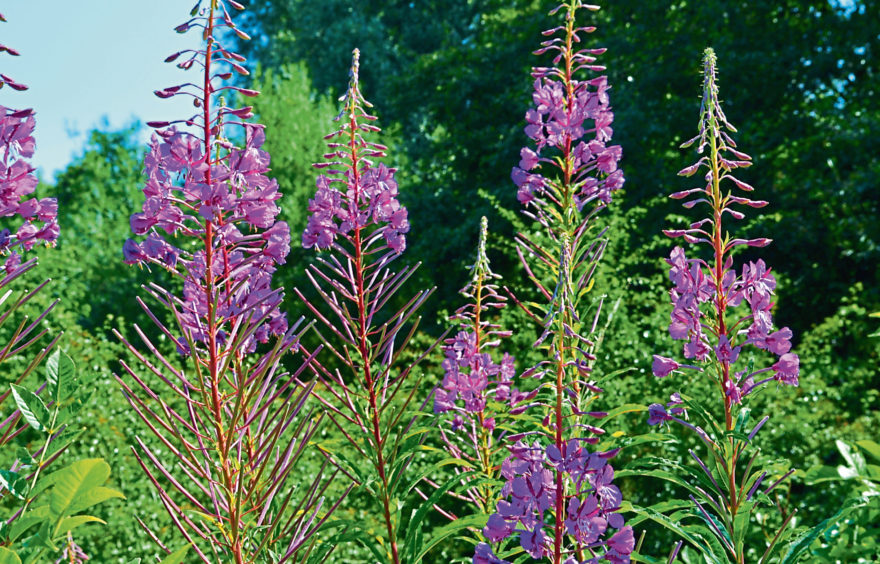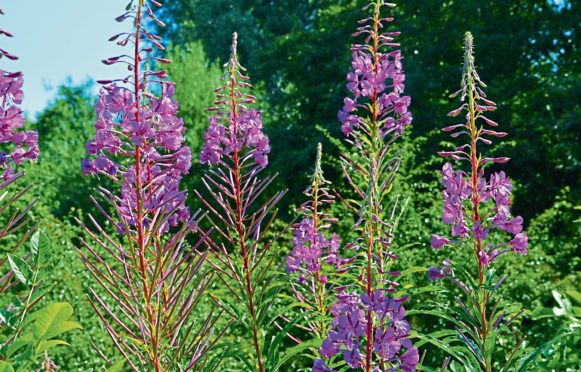Each rosebay willowherb plant can produce up to 80,000 seeds, which are fitted with plumes of featherweight hair that act like parachutes, enabling them to drift considerable distances in the breeze.
Skirting this little wood near Dunfermline, I suddenly find myself submerged in a thick blush of rosebay willowherb, their purply-pink flower spikes quivering gently in the breeze. Rosebay willowherb is such a serene name for a plant, although it is sometimes more prosaically known as fireweed because of its prolificacy in colonising areas of forest destroyed by fire.

I stop awhile to immerse myself in this sea of pinkness, watching bumblebees and hoverflies making good the richness of the nectar. Fireweed – yes, a most appropriate name, for these wind-whispered flowers could also be likened to flickering flames. Rosebay willowherb was also once known as bombweed because of the speed it occupied city areas laid waste by Nazi air raids.
It is hard to imagine that up until the 1800s rosebay willowherb was scarce in the countryside, but it has since undergone a remarkable spread and is now ubiquitous. It is thought that the development of railway lines and roads, along with their associated embankments, provided the perfect conduit for willowherb to colonise new areas, aided by those white-fluffed parachute-like seeds that carry far in the wind.
In other words, this is the supreme opportunist, a pioneer species, with its tall growth enabling it to shade-out plant competitors, thus quickly reinforcing newly occupied bridgeheads.
My eyes now focus on a marmalade hoverfly by one of the flower spikes. It has a fascinating robotic flight; a hover, then an angular change in direction, always in a straight line, rather than being executed in a smooth, curved turn. It is an attractive insect, just over a centimetre long with an orange body black-banded like a wasp.
Hoverflies don’t sting, but by mimicking the warning coloration of a wasp, they are able to deter potential predators. They are also little marvels of nature being able to beat their wings several hundred times per second when hovering.

The hoverfly disappears and I wander on. When I lived in Fife many years ago, this woodland edge was one of my favourite places to visit, but I haven’t been here for a while, so I need time to find my bearings, with some trees having tumbled and replaced by new growth.
The persistent seagull-like cries of a fledgling buzzard floats across the air and a couple of meadow brown butterflies flit by a clearing. One alights in the grass and holds its wings open, displaying wonderful flashes of orange on each wing edge, centred with a black spot. I approach closer, the wings quickly close, and in the blink of an eye the butterfly virtually disappears amongst the tangled background, such is the new seamless camouflage provided by the underwings.
This visual alertness of this butterfly to my approach was quite astonishing, which confirms recent research that insect eyes provide much more acute and detailed vision than previously thought. But that’s the thing about nature, we know so little and there is still so much to learn.










